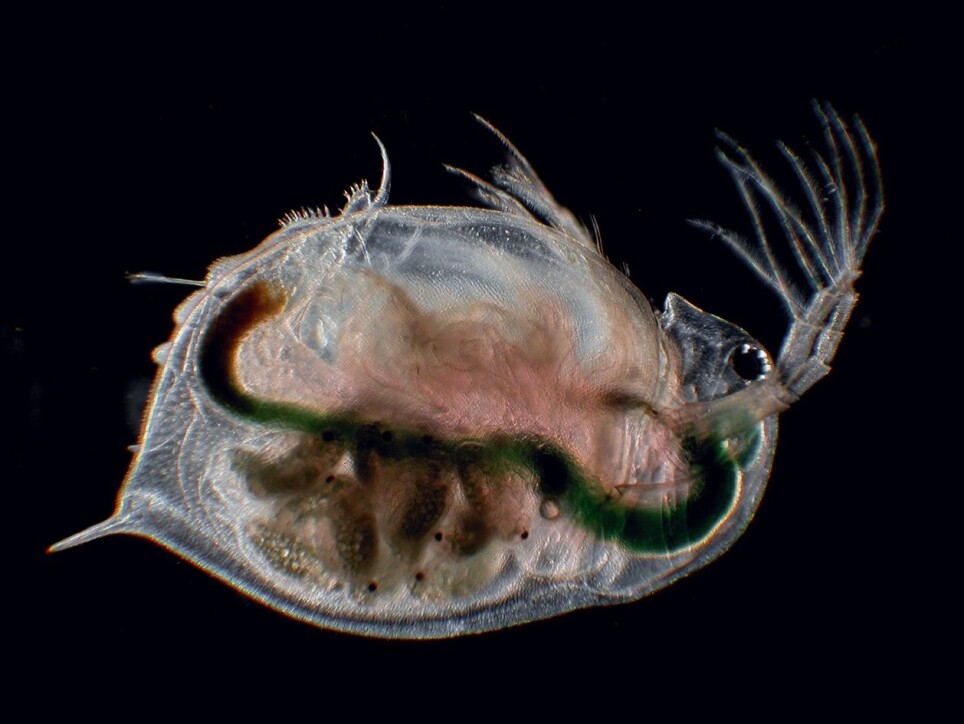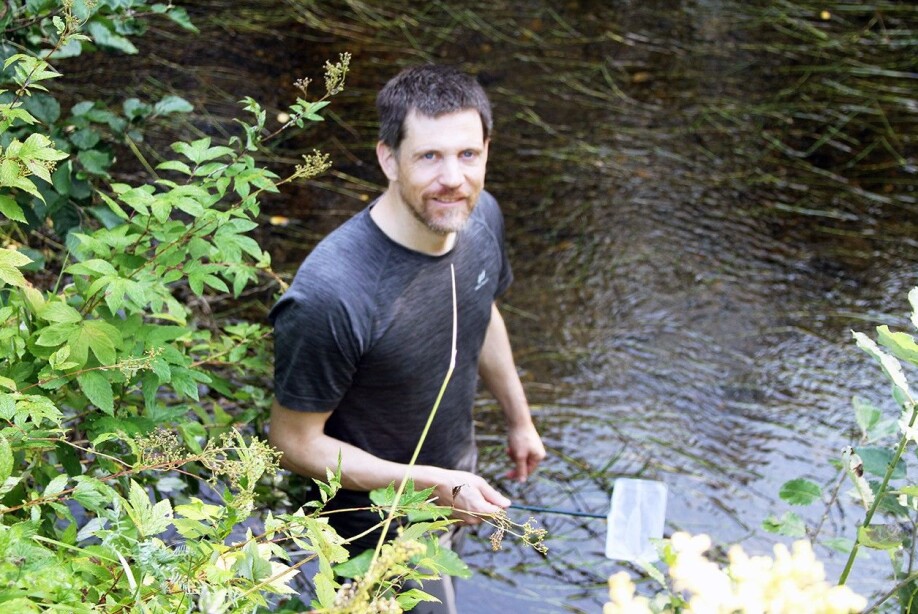THIS ARTICLE/PRESS RELEASE IS PAID FOR AND PRESENTED BY Nord University - read more

The water flea that Darwin couldn't explain
How many individuals are needed to maintain a species? Fewer than Charles Darwin knew.
Charles Darwin’s many observations of plants and animals in wild nature, but also of domesticated livestock and crops, gave inspiration to his famous theory of natural selection and evolution.
Darwin developed a universal theory of genetics and evolution that he called Pangenesis. However, he lacked comprehensive source data at a cellular level to analyse the importance of genetic material in evolution.
How many offspring in the next generation?
150 years ago, Charles Darwin and other natural scientists had to rely on the tools that were available at the time. Naturally, of course, Darwin could not answer the question of how extensive the genetic material in a population must be in order for the species to survive.
“The genetic diversity of a population depends on the number of individuals contributing offspring to the next generation. We call this number the effective population size,” says Professor Joost Raeymaekers from the Faculty of Biosciences and Aquaculture at Nord University.
Today, powerful computers and modern computer software are used on a large scale to find out what the cells consist of and how they work.
The Daphnia Magna water flea is a crustacean that lives in fresh water. By mapping the water flea’s genes, Raeymaekers and researchers at universities in Belgium, Switzerland, USA, Germany and the United Kingdom have found out how many individuals are needed to maintain the genetic diversity of the species - i.e. the effective population size.
In the study, recently published in the Nature Communications scientific journal, the researchers show that just five individuals of this species of water flea are enough to maintain a standing genetic variation that enables whole populations of a species to survive.
Changes in the amount of fish had consequences
The research group collected unhatched water flea eggs in three historical layers of sediment in a shallow fish pond in Oud-Heverlee, Belgium.
The eggs were hatched in a laboratory and the genetic material was mapped and compared with three different periods: In 1970–1972 when there were no fish in the pond, in 1976–1979 when there were many fish, and in 1988–1990 when the number of fish was declining.
The genetic material from 36 individuals from the three sediments was mapped, 12 from each layer.
The intention was to see if there was a correlation between changes in the number of fish in the pond and changes in the water flea’s genetic material.
In addition, it was compared with the genetic material from the same species of water flea found in twelve other ponds in the region, where six of the ponds had populations of fish, and six did not.
Changes in the amount of fish in the environment had major consequences for the water flea’s genetic material.

“Just a few individuals are able to maintain the genetic diversity”
The researchers found changes in 500 genes among the individuals of the crustacean species in the three sediments.
Professor Joost Raeymaekers explains that fish are important predators and can easily reduce the number of individuals in a population of water fleas.
“But high genetic diversity protects the water flea from extinction,” he says.
“Standing genetic variation is the amount of genetic diversity harboured by a given natural population. The genetic variation in the population represents what we call the evolutionary potential. i.e. the ability to develop or defend itself, purely genetically, without influence from other external individuals or an evolution through gene mutations,” the professor says.
The results of this study suggest that just a few individual water fleas can maintain this genetic diversity in order to secure the entire population.
“The insight provided by these studies of water flea species is particularly relevant to our understanding of how evolution shapes ecological reactions as a result of global changes.”
“The genetic development from ancestors to descendants depends on the strength of natural selection. This is exactly what water fleas experience when there are many fish that eat them.
Large effective population sizes of invertebrate animals cause higher standing genetic variation,” he says.
An invertebrate is a common term for animals with no backbone, such as insects, crustaceans, earthworms, sea anemones, corals, snails and shells.
Effective population size wins
“But how much gene material is needed to save the species when it is threatened?”
“Not that much, as it turns out. Generally speaking, however, vertebrates such as mammals and birds have small effective population sizes and therefore limited standing genetic variation,” says Raeymakers.
Species that have limited genetic diversity are more vulnerable.
“A network of large populations that are well connected in a landscape contribute to new populations being genetically diverse enough to tackle new environmental challenges. In order to preserve populations of large vertebrates that have lower standing genetic variation, a landscape perspective is needed,” says Professor Joost Raeymaekers, and further explains:
“This means that we must preserve and protect the landscape elements that make migration and genetic exchange between populations easier. For example, animals often use corridors to migrate between regions. This also means that we must avoid habitat destruction, as this will lead to smaller and more isolated populations. This is especially the case for organisms with low dispersal capacity,” he says.
References:
Anurag Chaturvedi et.al.: Extensive standing genetic variation from a small number of founders enables rapid adaptation in Daphnia. Nature Communications, 2021.
Yongsheng Liu: Darwin's Pangenesis: A Theory of Everything?. Adv Genet., 2018. (Summary)
Brian Charlesworth and Deborah Charlesworth: Darwin and Genetics. GENETICS, 2009.
———
Read the Norwegian version of this article at forskning.no
See more content from Nord University:
-
Kateryna's university has been bombed three times – but she's still teaching
-
5 things you didn't know about smart cities in the Arctic
-
AI sparked an idea that could improve road safety in Norway
-
These algae have been adapting for hundreds of millions of years
-
Could traces of bacteria in water combat salmon disease?
-
Bladderwrack in animal feed has the potential to reduce methane emissions





































